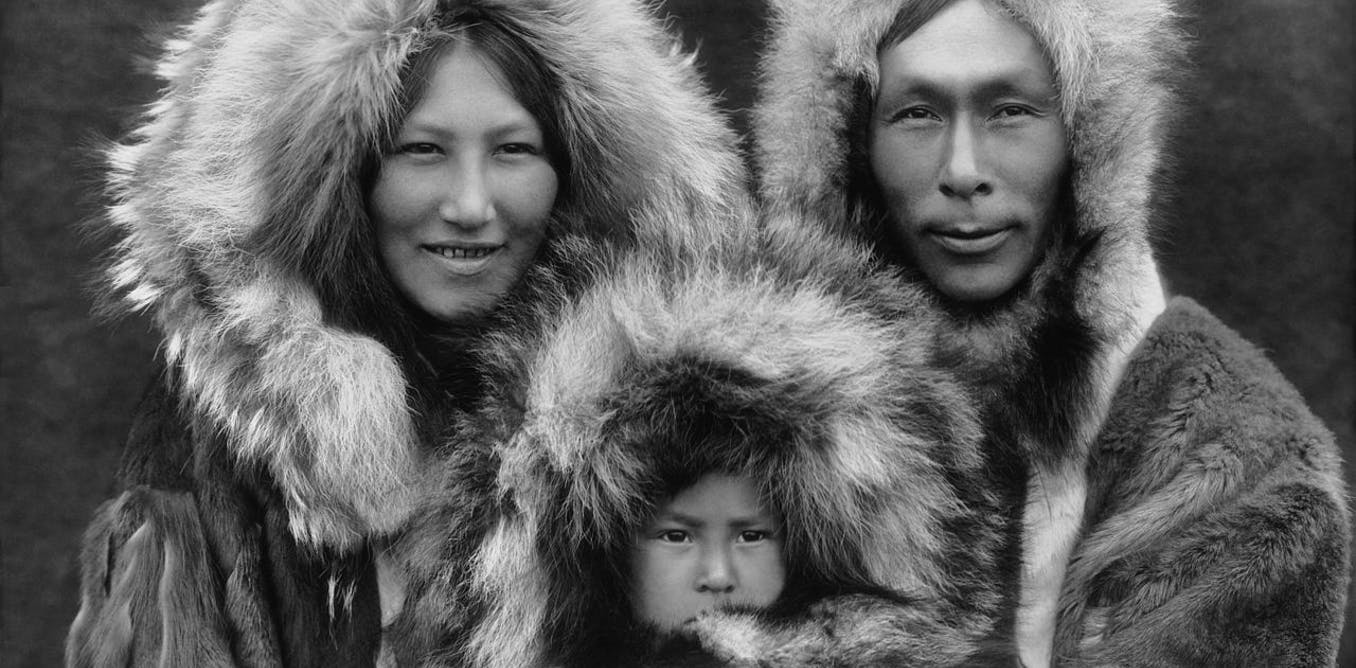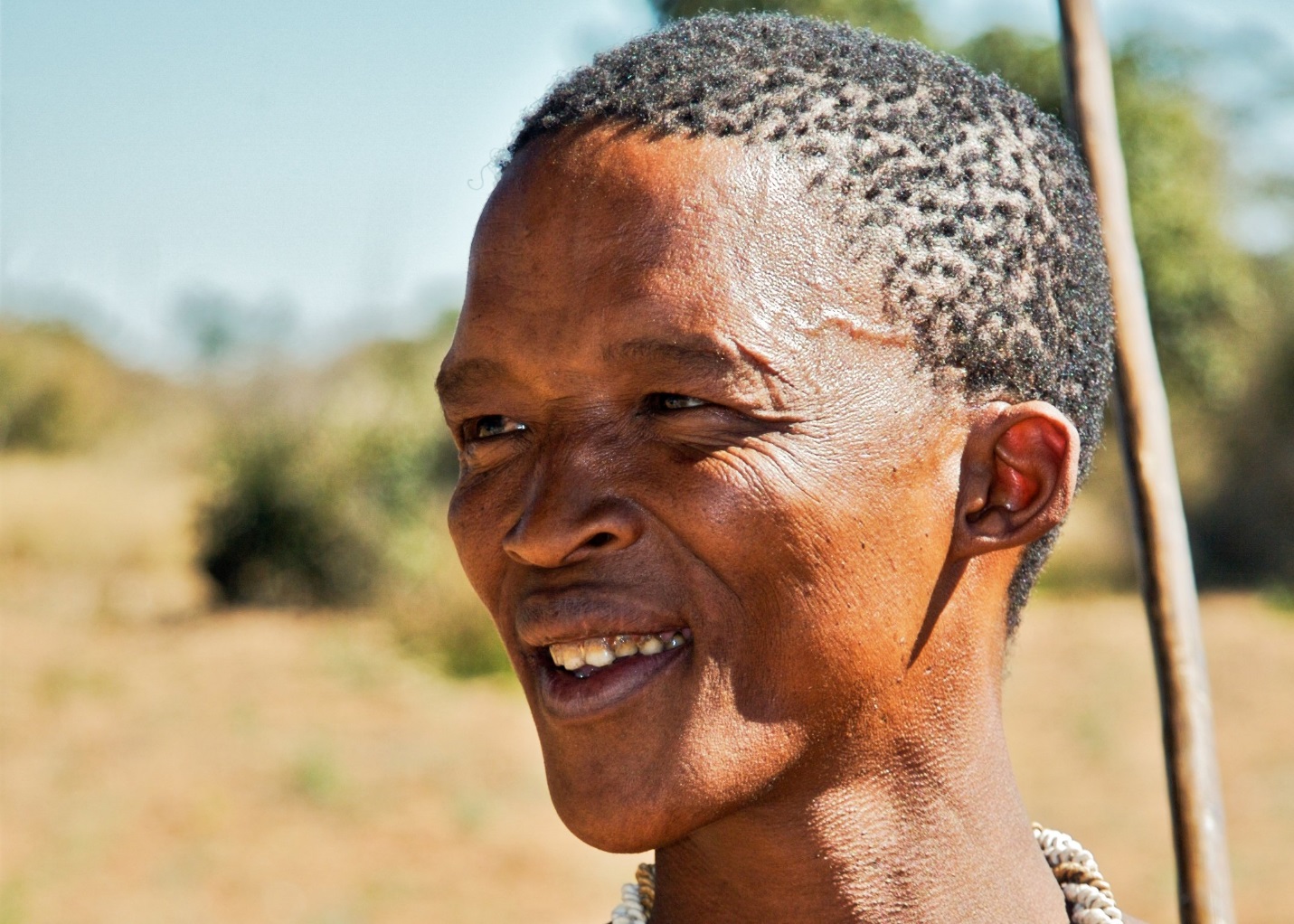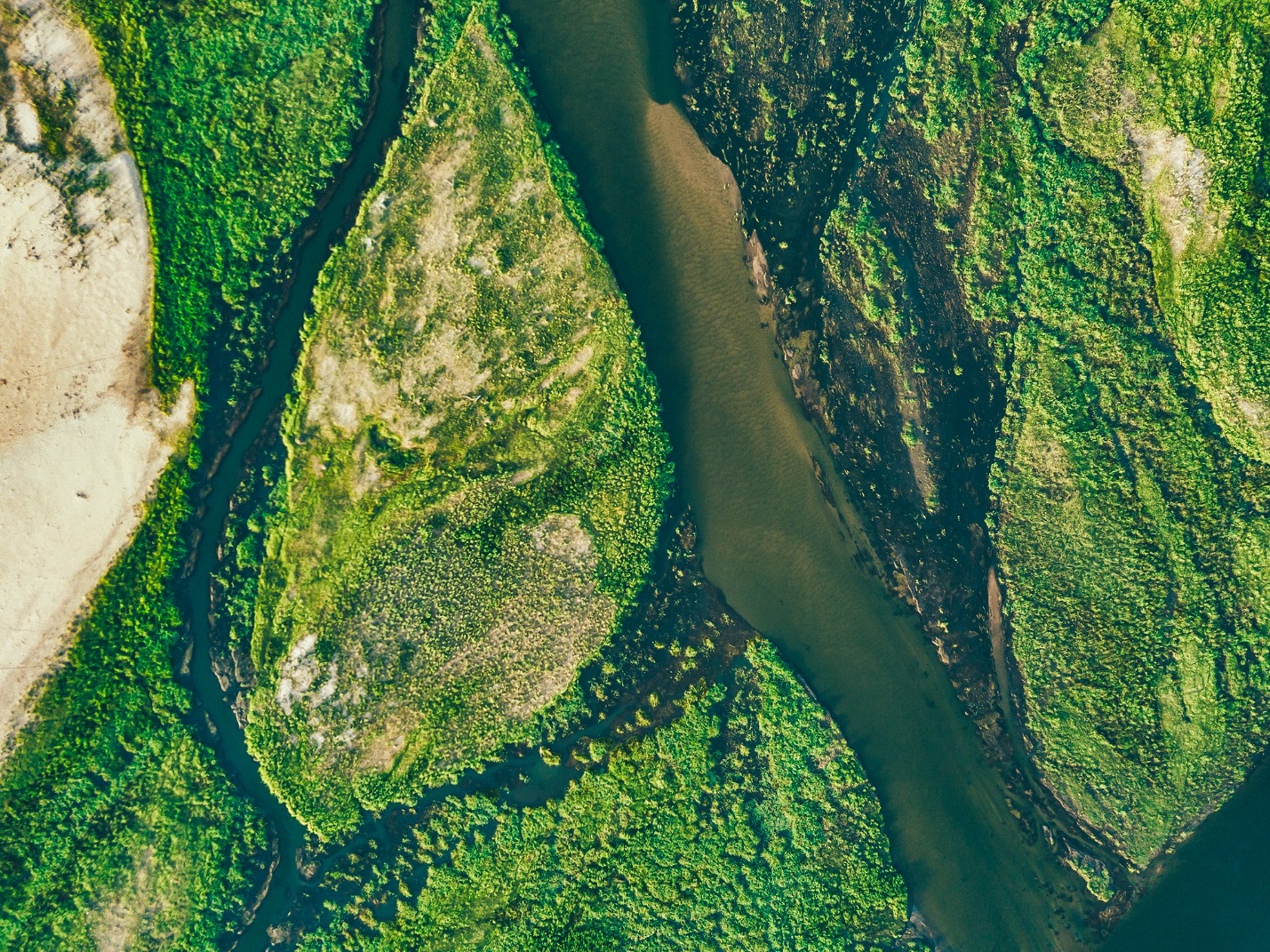Many people in the field of history and archaeology are always conducting research and discovering new things. A professor and his team of students were also conducting such an investigation at an ancient burial site in Alaska near the Upward Sun River.
However, as they kept on digging, they found skeletons and bones of two infants. They were shocked to discover these bones as the site is more than 11 centuries old. However, what they found surprised them even further.
Let’s explore the secrets that they learned after examining the skeletons.
#1. Discovering Bones

The skeletons of the two infants were found seven years ago. Both of them had a fascinating history. One of the skeletons was of an infant that passed away six to twelve weeks after being born. The other remains were of a stillborn infant.
Both of these unfortunate children were buried together at the burial site in Alaska. When the professor and his team researched further, they also found that the infants may have been female cousins.
Finding these bones came as a shock, but everyone was curious to know more about these bones. So, they put more effort into learning about this.
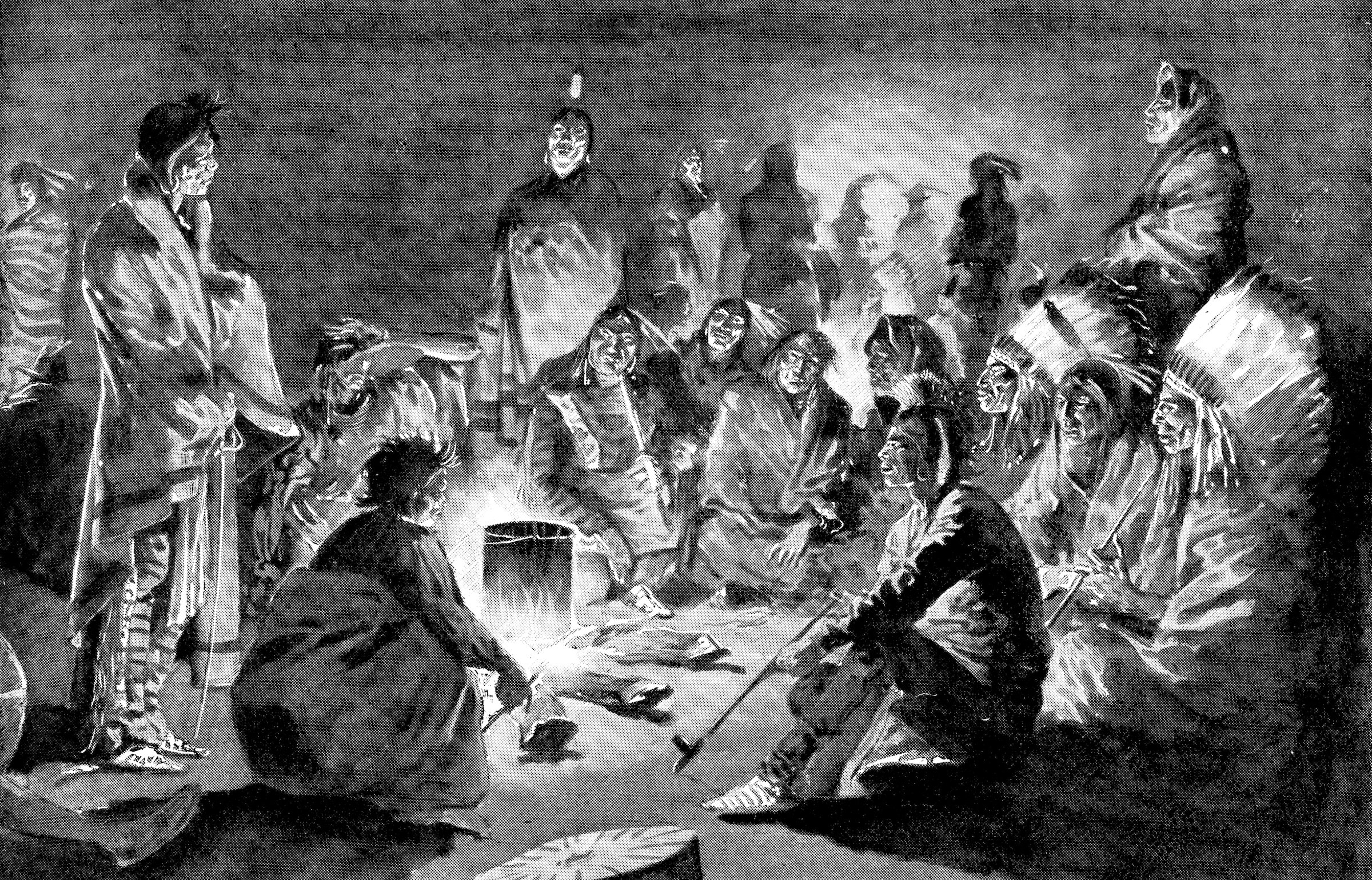
In 2010, a professor named Dr. Ben Potter and his associates found a three-year-old child’s remains on the same site. They were in the same burial site, but they were found over a fire pit. That meant the child had been cremated.
They left it like this and didn’t look into it further because nothing was shocking about finding old remains in a burial site. However, when they were conducting research again in 2013, they found the other two infants’ remains.
What they didn’t know was that their world was about to be turned upside down after discovering these bones.
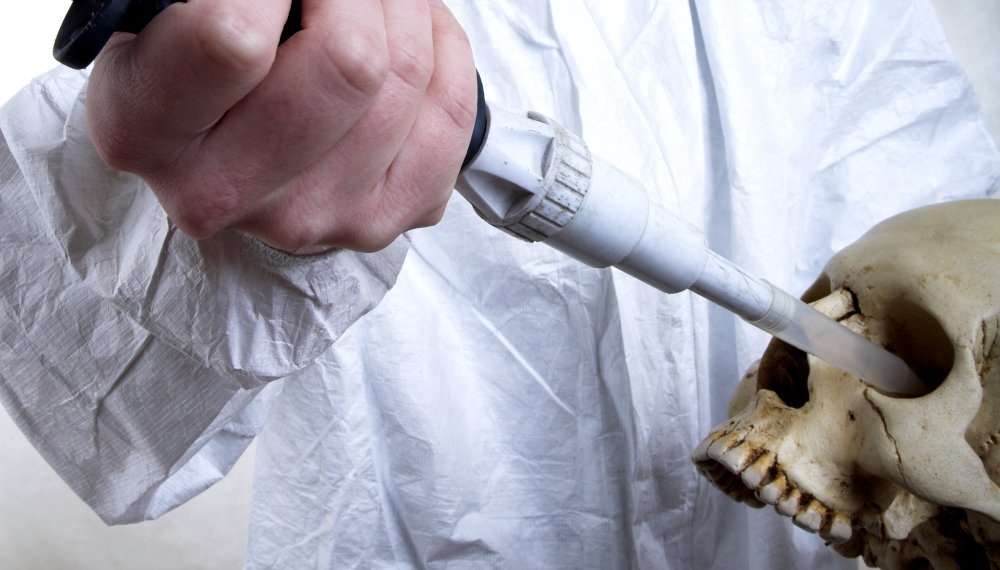
The problem in 2010 was that the three-year-old child was cremated and there wasn’t much left of her to do an analysis. However, the two infants found in 2013 were still preserved enough to allow for an examination. The scientists would be able to perform thorough DNA analysis of the remains.
They would also be able to retrieve some genetic material that would help them to know more about these bodies. However, they didn’t expect that the analysis would lead them to find out how humans arrived in North America.
Before we get to that, let’s go back to the beginning.
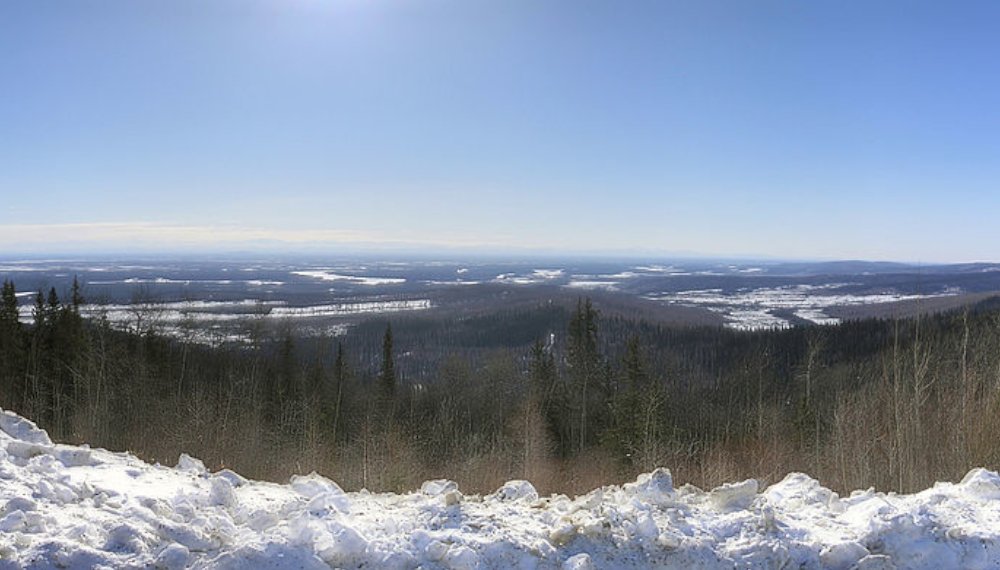
The beautiful USR was discovered in 2006 by Ben Potter and his team. The site is situated inside the thick and densely forested lands of the Tanana River Valley. You will find this river valley fifty miles from the city of Fairbanks in Alaska.
Discovering and then reaching this area was not easy. The problem is that it is located in such a remote and sparsely populated area that the only way to get to it is through a helicopter. Of course, Potter arranged all of it to access this site and start their research.
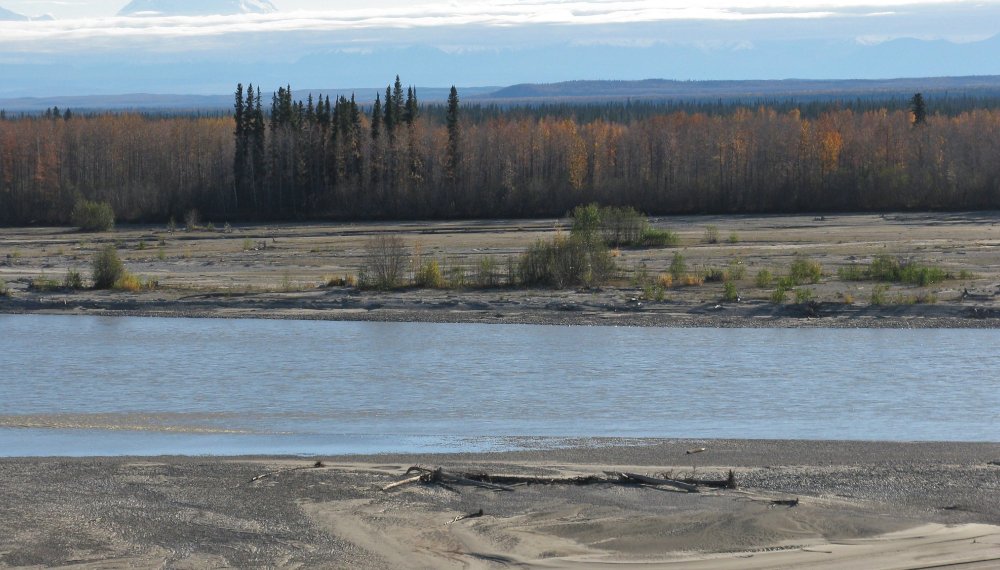
The Native American language is known as the Athabascan tongue. The USR is a name that is translated from this native tongue. The people that settled here first also decided to name the two dead infants an Athabascan name.
All of this wasn’t easy to find. The researchers knew that they needed some help to understand the full picture of what was going on. So, they started engaging with the community living in USR and got updates from them as to what had happened here in the past. That is how they found the names of the infants.
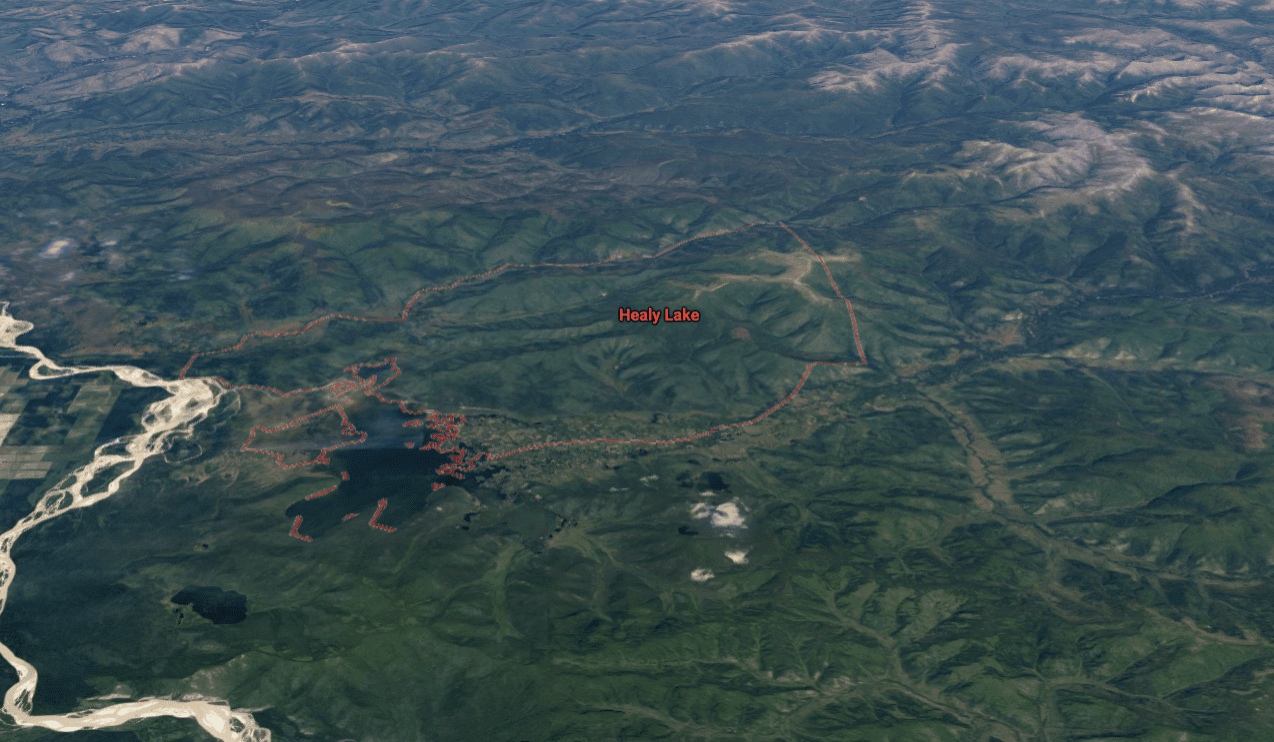
It wasn’t easy to gain the trust of the natives and the local community that was living in the USR. The natives distrust strangers, and they don’t like sharing their past with people from the outside. They are also protective of the dead’s remains, and they don’t want people digging it all up for their gains.
However, this time it was different. Potter and his team nicely engaged with them, and the natives gave their blessing to the group so that they could start digging. The tribe living there was called the Healy Lake Tribe, and they named the site Xaasaa Na’ (Upward Sun River).
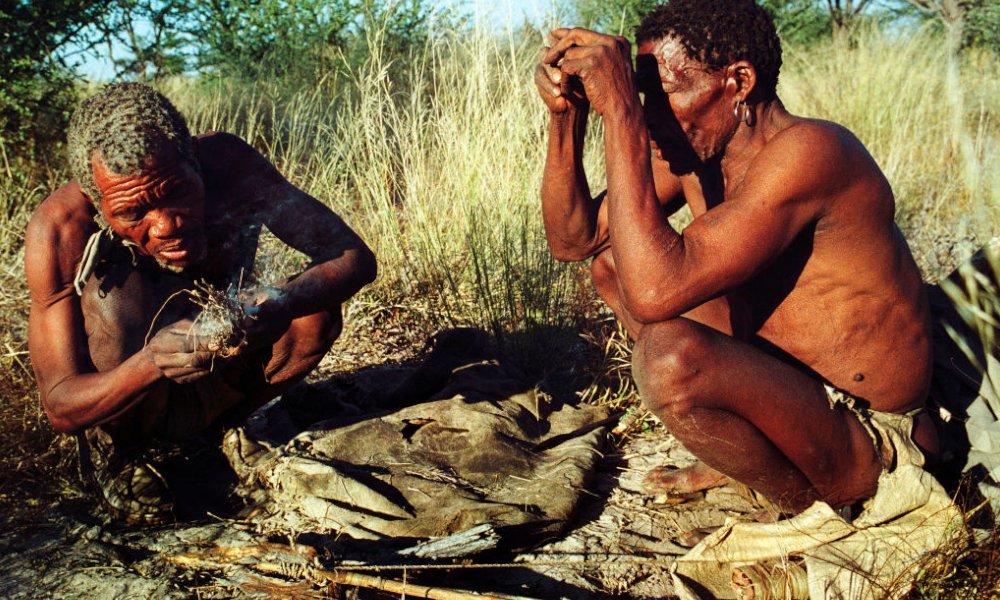
It is incredible how much we can find by examining dead bodies and talking to local communities. The tribes’ people had named the two infants in the Athabascan language. One was named Yełkaanenh t’eede gaay (twilight child-girl), and the other one was named Xach’itee’aanenh t’eede gaay (sunrise child-girl).
The two remains were of girls that were related to each other. When Potter and his team talked to the community, they also learned that the place was used as a settlement in the old times by hunters and gatherers. These hunters fed on hare, bison, and squirrels.
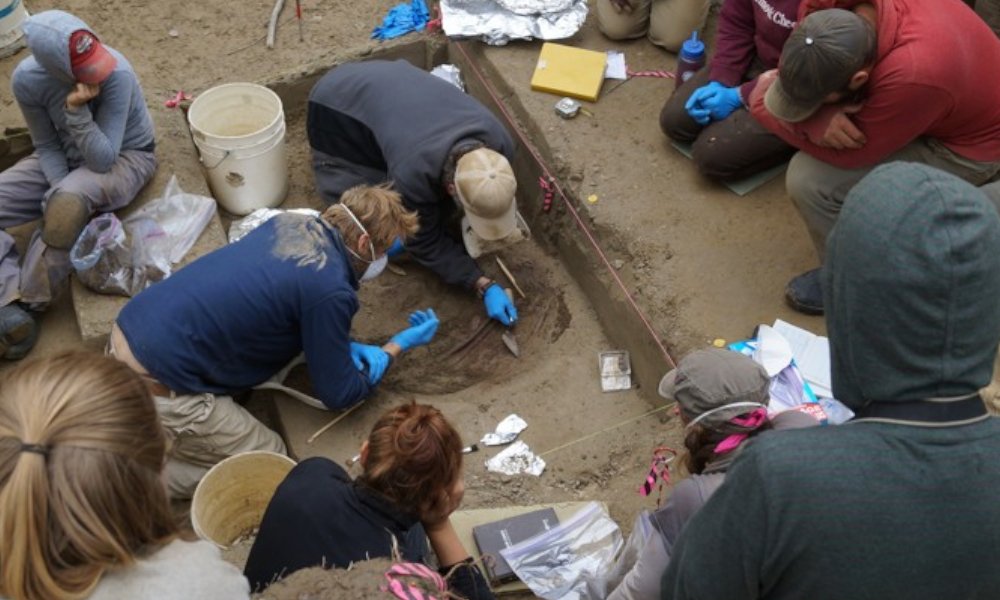
Most of these ancient sites were known as Paleo-Indian. In these sites, people set up camps for a while and moved on to another location after a while. However, the USR showed signs of permanence as the people that used this area as a settlement didn’t just set up camps there.
Instead, Potter and his team found remains of old buildings in these sites. These were residential buildings and the first of its kind in Alaska. They also found that people hunted small game at the time as they found remains of small animals and salmon in the buildings.
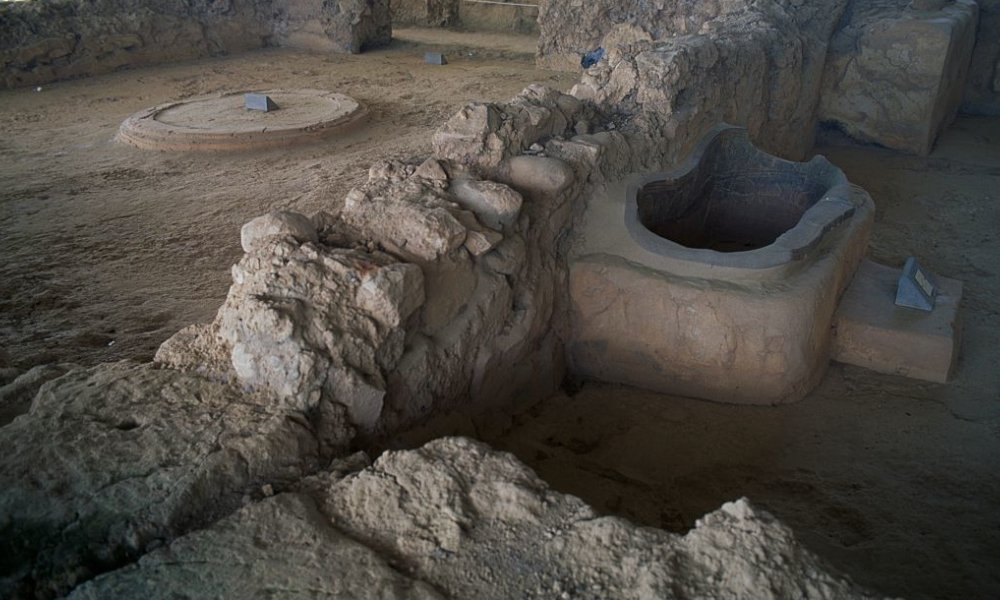
Before we move on to other things, let’s talk about the remains of the first child that was found in 2010. The body was cremated, but there were still some teeth left. Examining these determined the child’s age (3 years), but they could not determine the gender through the analysis.
They also concluded that the fire pit where the body was cremated was also used to cook food. Further examination of the site revealed that after the child’s death and funeral, the people decided to move on and desert the place.
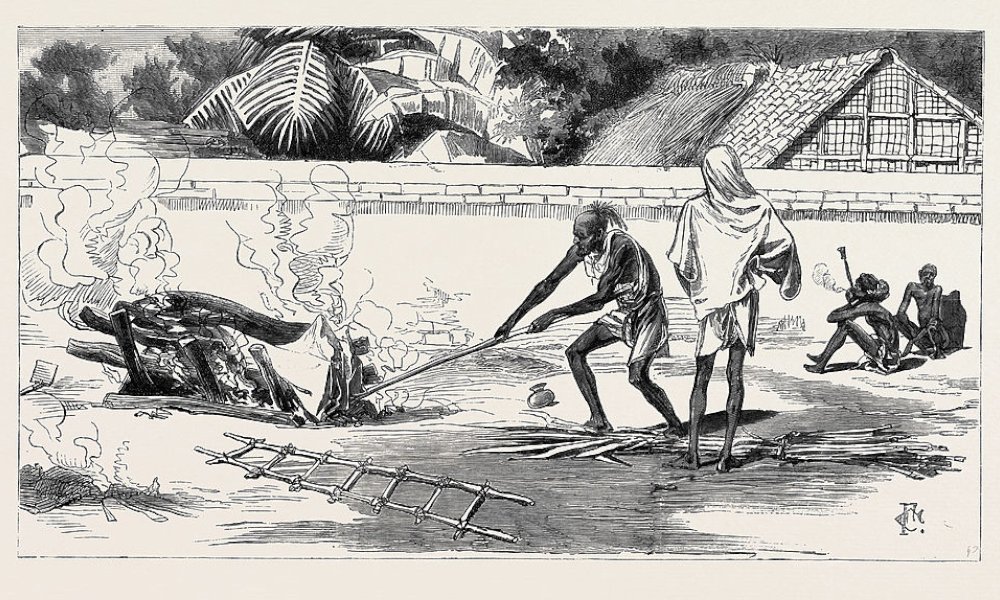
Analysis of the fire pit body couldn’t be done entirely, but the bodies buried underneath could be examined further by the research team. The bodies were surrounded by many items that were covered in red ochre. What was more surprising was that there was much of the body that was still preserved.
The research team was curious to know how that was even possible as it was an ancient burial site. So, they examined it further and found that the body was buried in soil and sand. The mix of this is incredibly acidic and not suitable for preservation. The curiosity sparked even further.

Many items were found inside the grave. These include spear points and pieces of antler. There were whittling marks on the antlers’ edges that showed they were combined with rods to make projectiles. Even after all this, Potter was sure of one thing: the infants were buried together.
The researchers did a closer examination and were able to determine the gender of the bodies. They did this by examining the incision on the pelvic bones and the bulges on the jaw. It revealed that both the remains were of young little girls.
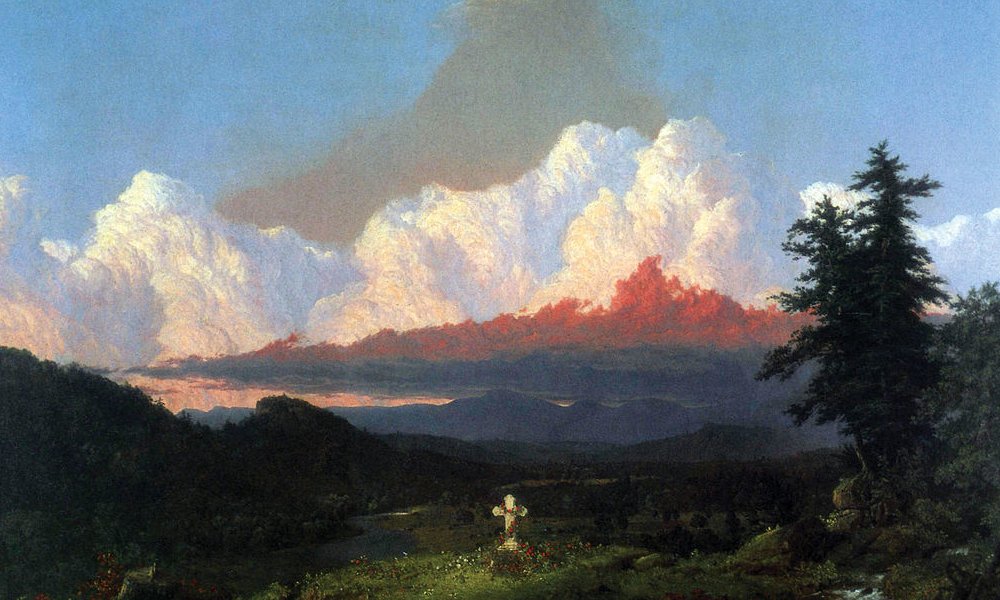
Potter theorized that the community was concerned when burying these two girls. That is because they gave them a proper funeral. Of course, the families would be devastated as the DNA concluded that both the girls were related to each other.
It is incredibly rare to find such remains and examine the ancient way of life. Not many times had someone found so much history in Alaska. Potter and his team found this place back in 2006, and they were set to explore it. After years of hard work, they finally started examining it and what they found shocked them.
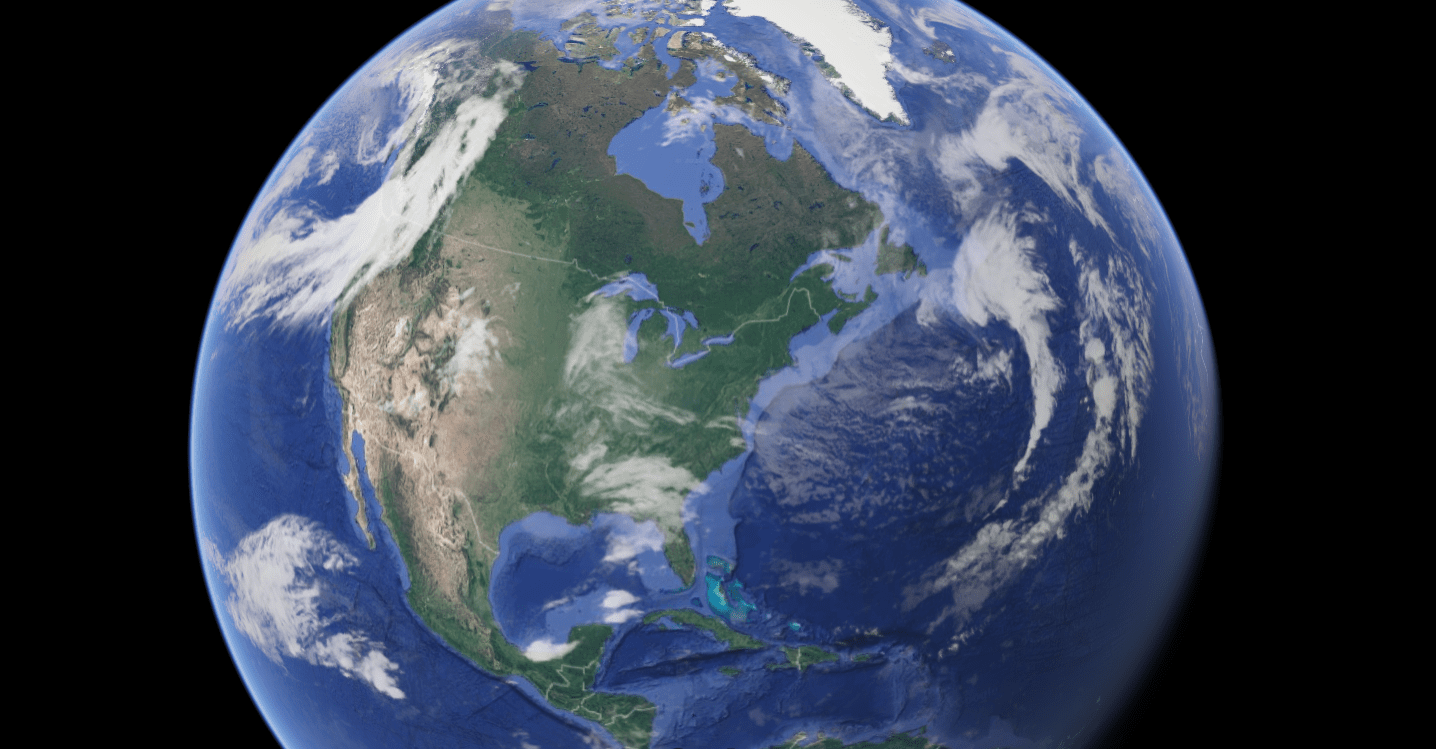
Everything that the researchers found was archaeological gold. However, its value was not in what they saw but what could be found by examining the remains. The remains were intact enough for them to conduct a thorough analysis with the DNA’s help present in these remains.
The DNA was gold for them. They could conduct in-depth analysis and understand what was going on in the ancient communities. More than that, Potter and his team could understand how humans made their way to North America. Understand this was the most important thing to them.

There was no DNA found on the cremated body. On the other hand, these two children were completely different. The team found DNA, and this changed everything for them. One of the girls had an extremely viable DNA sample.
The valley where the remains of these girls were found is of extreme importance to archaeologists. It helps them track the life of the early North Americans and how their journey led them here. The area is also known as the ancient land of Beringia. More than 11,000 years ago, it was a land bridge.
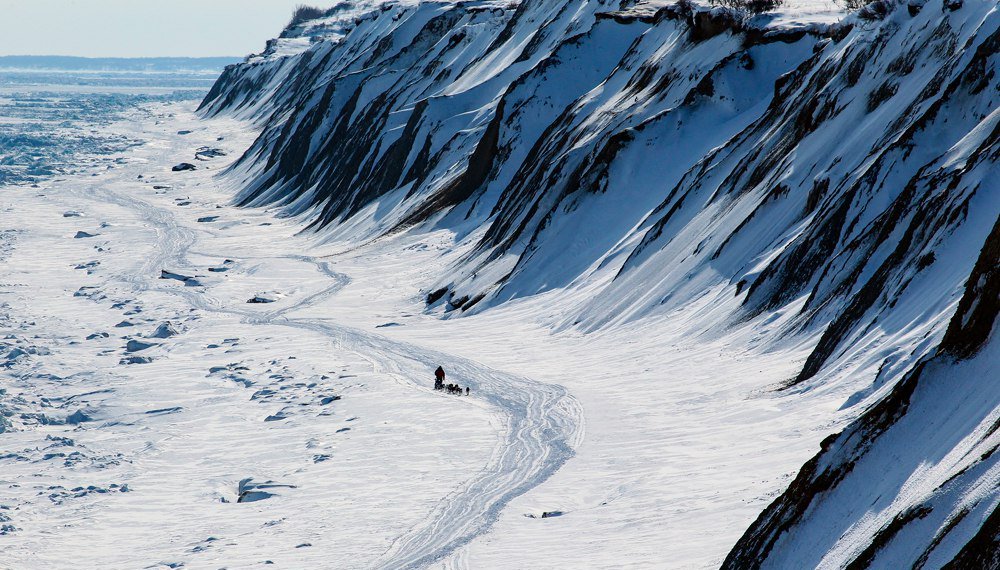
The land bridge that existed on this site vanished when the sea levels rose. It took everything with it, and the land bridge was immersed in it as well. Many people will say that this was the last ice age. That is because the glaciations came to an end, and we experienced higher sea levels.
However, that is not entirely true. If we were to understand it further, we would realize that we are still in the ice age. It is a warm one, but it is still the ice age. The name scientists give to it is known as the Quaternary.

In our current ice age, we have experienced many glaciation periods. It meant freezing weather that was almost intolerable at a certain point. That is because the glaciers in the Poles extended close to the equator. However, from what we know, the last glaciation period ended more than 12,000 years ago.
That last glaciation period lasted for more than a hundred thousand years. The period was at its peak more than twenty-thousand years ago. During this time, New York City was a two-mile deep ice field. Yes, at one point, NYC was just a thick slab of ice.

These slabs of ice were everywhere during the ice age. The weather was towards such extreme coldness that the sea levels were deficient. All of the water had turned into slabs of ice because of the climate. As the glaciers melted, the sea levels rose again, and we got to see lands.
However, an exciting thing happened when sea levels were this low. It allowed people from Asia to make their journey into North America. Yes, even in such freezing weather conditions, people came and settled here on this piece of land. They crossed all of Asia to get into America.

The journey from Asia to North America took place over thirty-thousand years ago. It was one of the first accounts of human journeys, and these travellers were brave enough to make such a journey in the freezing conditions. The travellers stayed on what was just a piece of land bridge at the time.
However, fifteen-thousand years ago, the glaciers in this area began to melt as well. So, the settlers there left the ancient land of Beringia and made their way into what is now known as South America. That is how we get to know about the journey of humans into South America as well.

We only have glimpses of the past from the data we have collected. We still don’t know the full story of what happened. The migration patterns were complicated, and it is hard to determine them after so much time has passed.
Some people believe that the people in Beringia stayed there for a long time. On the other hand, some people believe that many migrants crossed the land bridge and travelled to the south and elsewhere. We can’t draw any firm conclusions now because the glaciers melted, and Beringia is now under the sea.
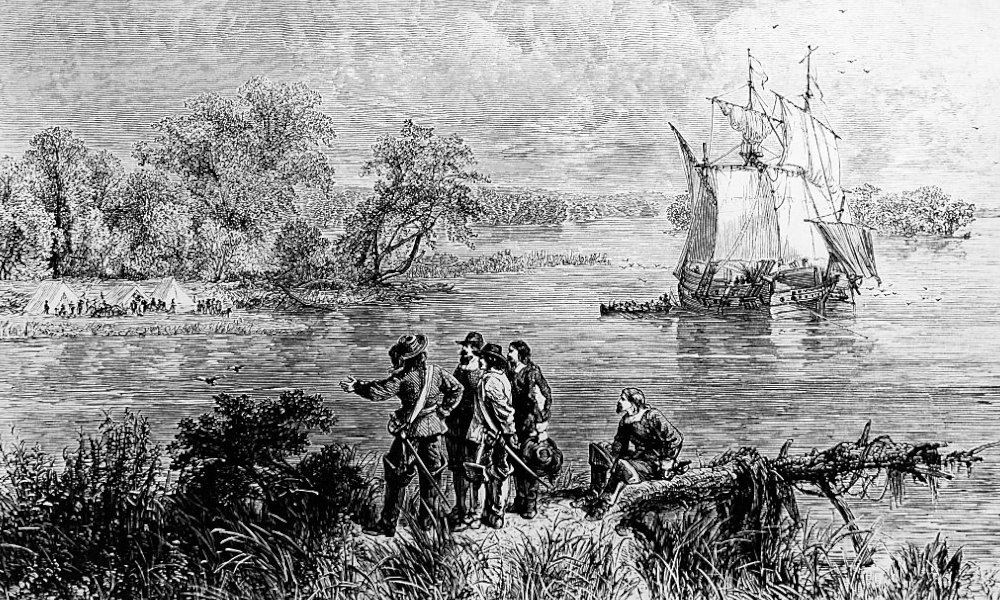
Waves of migration took place from and to Beringia. The theory is supported by Native Americans that still live in that area. They belong to five different gene pools. Scientists call these A, B, C, D, and X. The standstill theory doesn’t support this.
It says that this diversity wasn’t the result of many gene pools migrating from and to Beringia. Instead, it results from one gene pool staying long enough in the area to create a diverse pool before they made their way to the south. Both of these theories are contradictory.

When Potter and his research team discovered these two little girls’ remains, it gave them hope. They hoped to understand the intricate migration patterns through their DNA. They wanted these remains to provide them insights into what had happened thousands of years ago. That is the beauty of science.
That is why once they had the remains and collected everything from the burial site, it was time to analyze it. The team was most excited to conduct thorough DNA analysis. That is because nothing can give more information than what is embedded inside our DNA.

It was now time for Potter and his team to hand over whatever remains they collected to experts who would conduct analysis. The remains were given to scientists headed by Justin Tackney. He was an anthropologist working at the University Of Utah.
They had the most challenging task, but Potter believed there was no one better equipped to deal with this than them. The scientists had to extract genetic material from the bones. However, they were looking for one thing, in particular, mitochondria. Looking at this would give them the information they needed.

If you have ever studied science, you are probably familiar with what is known as mitochondria. They are known as the powerhouse of the cell, and they are microscopic organelles. They turn the elements in our food into nutrition for our body.
Of course, they have a much higher responsibility than just converting food to energy. They are responsible for collecting waste from our bodies and removing harmful items from them to protect our bodies. Without mitochondria, we would cease to function correctly, and that is why they are our powerhouse.

Looking at life from different perspectives allows us to gain more profound knowledge of many things. For an anthropologist like Justin Tackney, mitochondria can do much more. He learned that if DNA was extracted from mitochondria, then it can serve a much higher purpose. He explored this idea further, and guess what he found?
Justin Tackney found that extracting DNA from this powerhouse can allow them to determine a person’s maternal lineage. They were excited to tackle the two girls’ remains because they knew they could extract information about this from their mitochondria. As a result, they did work out the maternal lineage of the two girls.

Scientists can conjecture, but the results will always be surprising. Justin Tackney and his team were in for a surprise, too, while conducting a DNA analysis of the remains. They found that both children had different maternal lineages.
While this may not seem surprising to you, it was surprising to them because the infants were buried together, and they died together too. One girl’s maternal lineage was from subgroup C1b while the maternal lineage of the other girl was from subgroup B2. The revelation started Potters team and Tackneys as well. No one expected this to happen.

Potter and his team wanted a more in-depth insight by looking at DNA from different parts of the body. That is why he and his team gave the remains to a team of genetic specialists in Denmark. They were required to perform research into the DNA and provide a full picture.
The team in Denmark was responsible for extracting DNA from the skull of one of the girls. It was the girl that was named sunrise girl-child, and she was the one that died within six to twelve weeks after being born. The analysis would give them more insights.

The genetic specialist team in Denmark made a wise decision. They decided to compare the DNA from the sunrise girl-child with the genetic material from almost 170 different global populations. Doing this would allow them to understand the migration pattern during that time.
Once the specialist team conducted this research, they concluded that there was only one flight from Beringia going into the south. There were not any other movements migrating like this. What this confirmed was the standstill theory of migration. The findings provided credibility to that theory, and the team wanted to learn more.

There was more to this than just lending credibility to the standstill theory. The results showed different maternal lineages, which was confirmed by the specialist team in Denmark. Of course, further examination was required into this, too, to understand the genetic diversity.
The subgroups of gene pools were B2 and C1b. These gene pools are still found in Native Americans. However, they are not found in people occupying modern Siberia. The evidence pointed towards the fact that the gene pool in Bernigia at that time must have arisen because a population decided to settle there for a long time.
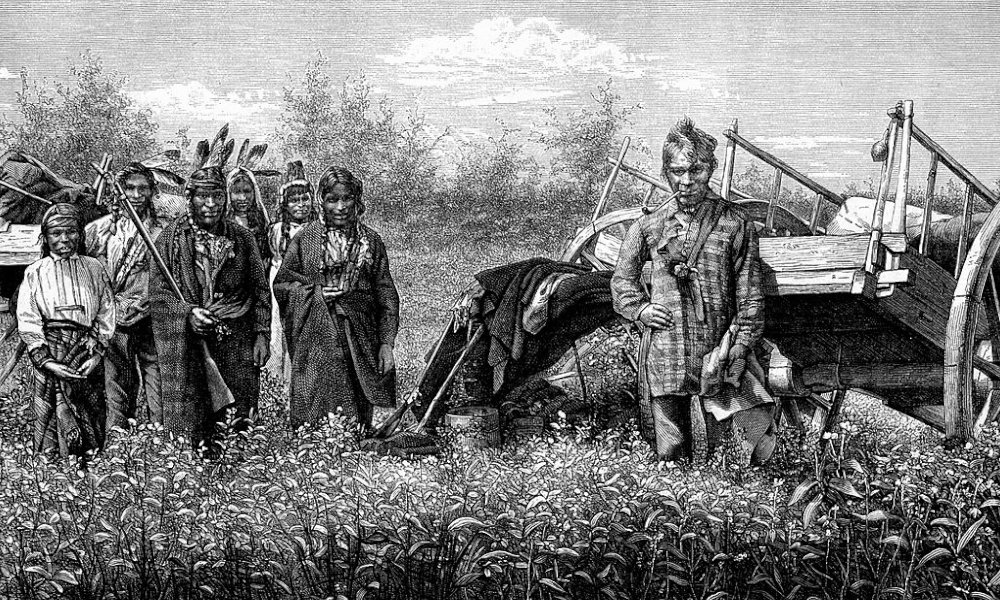
History is complicated. We think we know one thing, but further examination reveals that what we knew was wrong all along. That is why we can never fully know everything about everyone. We can only infer from the data we can collect.
Two years ago, Miguel Vilar talked to National Geographic and told them that we thought American people were simple twenty years ago. Still, it turns out that their history is quite complicated. Another scientist, John Hoffecker, told them that there was still a debate on our ancestral origins. So, we can never be quite sure of anything.

Potter’s work supports the idea of the standstill theory. The people that left Siberia settled in Beringia, and now the researchers call these people The Ancient Beringians. Potter and his team also believed that the genetic groups developed there instead of coming from Siberia.
There was a prolonged period of settlement before Beringia went under the sea. Justin Tackney also talked in 2015 to Science Magazine. He told them that this was the closest we would get to learn about Beringia’s people as no material can be extracted since it is underwater.

There is a lot of talk about what kind of species settled in the New World first. According to various researchers, there is evidence as to what kind of people become a part of the New World. This happened some 15,000 years ago, and the evidence found is shocking when it comes to who these species were.
According to a renowned geneticist, Connie Mulligan, the first settlers in the New World were Ancient Beringians. Through the evidence collected, there is enough reason to believe that as the ice began to melt, the Beringians made their move to the New World and became the first settlers.
32. Complex Pre-History Of The Native Americans

The discovery of the first settlers was stumped by the discovery of the infants’ bodies. It gave way to understanding history in a different and a newer dimension. This lead to in-depth understanding of the movements of mankind. With the establishment of the evidence found from the two infants, it was clear that no one came across this information before.
So, there was no information about this species existing at that time till the discovery. With this discovery, the entire dynamic changed as it allowed for a more accurate yet complex understanding and explanation of the history of the Native Americans.
33. The Human Origin

With the new information, it became clearer as to how complicated the origin and movement of mankind really is. This leads to researchers and people like us to try to understand the humankind better. More than that, questions arise as to how we as humans dealt with the changing and difficult conditions of the locations they were in.
The use of human DNA has allowed to conclude that the possibility of immigration existed in those earlier times as well. Humankind origins don’t reside in Africa only; they’re widespread. While mainly it was known that the start of humans started from there, it is now being debunked by the latest discovery of the two infants.
34. The Discovery

To understand the exact location of the origin of mankind, another geneticist, Vanessa Hayes took upon herself to find the details. She went on to figure out where it all started. To do this, she led a team that worked around with the mitochondrial DNA and took about 1,217 samples to come to a conclusion as to where it may have all started.
Since the gene goes from mother to their children, it was essential to look into a large sample to get to the answer. It was concluded, after extensive research that the location had a description along the lines of an ancient lake that went on to become wetlands.
35. The Concept Of Evolution

Throughout the course of various research, experts have suggested the origin of humankind to Africa. However, accurately plotting the exact movements and evolutions of the mankind over the years isn’t easy and requires a lot of evidence to start with. It is known that evolution that we know of took place some seven million years ago.
This is when humans started taking on a different shape and evolved from the primates’ stage. Humans evolved from what we now know as apes, chimpanzees, and other species of primates. This evolution took years to reach the modern-day humans that exist in today’s time.
36. The Relation Of Humans And Primates

Essentially, it is very difficult to connect every link that forms between primates and humans. With a vast number of these species that existed, there is little evidence that remains when it comes to connecting the link between humans and primates.
So, there is a high possibility that an entire species might have been missed because of the lack of data and evidence available to back it up. However, as time went on, there is better understanding that the earlier species of mankind roamed and trekked different locations around the globe. For instance, the Neanderthals were discovered to roam in Europe.
37. Changes In The Different Human Species

While essentially Neanderthals are talked about the most, the evolution gave way to categories such as Homo erectus and Homo heidelbergensis. This variation of humans was different than the Neanderthals as they appeared to have different features. According to the fossil evidence found, these were slender than the Neanderthals and didn’t have to broader built like them.
This species of humankind developed or evolved after the Neanderthals. While there were small changes, they were still clear enough to be caught through the fossil evidence that was collected. This is the species of mankind that roamed the earth before the Homo sapiens.
38. The Advent Of Creating Tools

With the evolution from the Neanderthals came to development and mastery of tools as well. The new humans were more skilled and resourceful when it came to developing tools and weapons. With evidence available in terms of the spears and other tools they created, it is clear that it took some craftsmanship to make these tools.
The tools were more effective and sophisticated; therefore, they must have aided during their trips to hunts s well. These tools were sharpers, sleeker, and easier to carry as well. Neanderthals, on the other hand, had heavier and larger tools that they used as weapons.
39. The Multi-Regional Hypothesis

While it was clear that Neanderthals and Homo sapiens were different in terms of how they looked, however, they appeared to follow a similar way of living. This lead to experts trying to figure out what might be the reason behind this. The answer proved to separate into two reasoning. One of the theories put forward was the multi-regionals hypothesis.
The multi-regional hypothesis suggests that humans were not isolated in one location in the globe. Instead, they were located in various locations all over the world that led to them evolving in different regions, at the same time as others.
40. The Out-Of-Africa Theory

The other theory that experts have suggested is the Out-of-Africa theory. This is different than the multi-region hypothesis as it focuses on one region only. In this theory, experts believe that there was no placement of humans in different locations. Instead, they were mainly in the regions of Africa. Here, they lived for about a thousand years before moving on to any other areas.
So, what this means is that humans grew and developed in one continent before making their way to other locations around the world. There is evidence suggesting that this theory is much more possible than any other out there.
41. Connecting The Dots Of Evolution Using Science

Scientists were able to come to a conclusion based on DNA testing. The use of DNA made things much easier and changed the entire way that ancestral lineage and other forms of evolution were researched about. Using these mechanisms, it was easier to decipher the origins of the humankind as opposed to any other option out there.
Analysing the genetic details of people and finding links became easier for scientists. Also, all of these findings and researches led to plotting the location where it all started. The plots drawn led to one location in most cases, and that was the continent of Africa.
42. The Role of Mitochondrial DNA

The one thing that allowed for the lineage to be understood in every study is the mitochondrial DNA. It enabled researchers and scientists to work with the genetic codes that exist in humans from their mothers. Therefore, figuring out the passage of these genes became easier for researchers.
While tracing of the lineage became easier, there was also ease of understanding what kind of evolution took place. The genetic code also allows scientists to understand the mutations that take place in a human’s body. Therefore, when studying the lineage, it became easier to understand the changes that were passed on from the mothers to the future generations.
43. The Scientific Eve

One of the most shocking discoveries made was by tracing the DNA throughout the centuries. With continuous tracing, it became evident that the DNA led to one woman whose genes were transferred to every person on the planet at this stage. While many would jump to the conclusion that this is the biblical Eve that everyone talks about, but it isn’t.
Instead, this is a scientific Eve that is considered to be a woman whose genes run in every person on the planet. The one thing to consider is that she wasn’t the first woman to set foot on the planet.
44. The DNA Communality

There is a possibility that one might jump to the conclusion that she was the first woman on Earth. However, that isn’t true. This is mostly because there is evidence that the scientific Eve lived on Earth surrounded by a number of about thousand people. Therefore, there is no clear indication that she was the only or the oldest woman from the ancestors.
The only that we can derive from the findings is that this scientific Eve had a lineage of daughters that continued to the existing date. There is no other explanation for this other than what has been presented.
45. The Unbroken Lineage

Eve, according to the scientists, had a lineage filled with daughters that allowed the tracing to her existence. There proves to be an unbroken lineage, making things slightly easier for scientists and researchers when it came to identifying her. Moreover, there is evidence that she is perhaps the only woman who has had this far-reaching lineage till date.
With the tracing of the DNAs, Eve’s location is set to be somewhere in East African regions. Thus, also confirming the Out-of-Africa theory further. But with this proof, more questions came to surface asking how these humans moved to different locations and the disproportion in the continents.
46. The Spread of Mankind

To find the right answers, scientists connected with archaeologists and dived into extensive research. Once all of the data was collected, it proved that there was a period in which there were excessive migrations. While essentially, they remained in Africa, but about 60,000 years ago, they decided to move to different regions.
So, these humans travelled from Africa to regions of Asia in search of new land. About 15,000 years later, there is evidence of human existence was present in Indonesia, Australia, and Papua New Guinea. A few thousand years later, they were found to be leaving their origin of Africa for new land in Europe.
47. The Period of Migrations

Another question arises when looking at the details of human immigration and this is what pathways did these humans choose to get to their location? Those moving to Europe from Africa didn’t have much choice but to make use of the two paths available to them through the northern areas.
One of the options available to them would be through the Mediterranean coast that would enable them to reach Europe. The other option that they would’ve had was the passage available through Danube and Turkey. As these humans took charge and moved to locations left, right, and center, the Neanderthals were pushed into a corner.
48. The Disappearance Of The Neanderthals

Around 25,000 years ago, the Neanderthals became extinct as the Homo sapiens took the world by storm. As the movements of the Home sapiens became more and more common, the Neanderthals were pushed aside and into remote areas where they quickly reduced in number.
The Neanderthals were limited to being in the mountainous areas around the world, that too in a very small number. Over time, these numbers reduced further and led to their disappearance from the world completely. What remained were the Homo sapiens and their drive to find new land. Thus, it led to them discovering new locations for themselves.
49. Pathway To America

As the Homo sapiens ventured outside of their place of origin, their first stop was in Asia. From there, about 15,000 years ago, they ventured into newer, unchartered territory. They made their way to the Americas slowly and gradually, after travelling a great distance. The travel took them across the Pacific oceans and through a range of adventures before they could reach their location.
Their destination happened to be North America and they went on exploring the areas further. As they stepped foot on the land, they began to explore further into this new continent, and many of them made their place in South America.
50. The Little Remains Of Homo sapiens

The truth is that all of these details are backed by very limited evidence. Since there isn’t enough fossil evidence to work with, to begin with, researchers and experts have come a long way to make such discoveries. By combining scientific means with archaeology, there have surely been better understanding of human evolution.
All this information stems very little knowledge about the ancestors. Also, the outstanding bit is reaching to these conclusions even after dealing with massive changes in the original location from where mankind started- Africa. With weaker structures of the Earth, finding the bones of ancestors has become easier than before as well.
51. Uncovering the Remains of the Homo sapiens

No matter where the archaeologists dig, from Europe to Africa, they have had little to no luck when it comes to uncovering the remains of Homo sapiens, which can be known as the earliest Homo sapiens. However, this does not mean that archaeologists will then lose hope. After discovering almost nothing, archaeologists started exploring other options. It was due to this that some experts within the field of archaeology began to think that there is a possibility that the earliest humans did no bury the dead. This theory becomes highly likely once you keep the Neanderthals in mind, who chose to leave their dead to decompose in the open air or cremate them.
52. Pinpointing Human Origins

Even though archaeologists have remained unable to find the skeletal remains of the first humans, there still exists a glimmer of hope. This glimmer of hope is, in fact, brought by the combination of technology as well as modern science. This combination has allowed us to not only get closer but to pinpoint the origin of all humans. This can be seen once we review a study conducted by Vanessa Hayes, who is a geneticist associated with the Garvan Institute of Medical Research in Sydney. It was conducted in the year 2019, where she relied upon mitochondrial DNA to search for the answer.
53. Hayes’ Study
Within this study, Vanessa Hayes, along with her team, gathered a total of 1,217 mitochondrial DNA samples. These mitochondrial DNA samples were collected from only those people who were currently residing in Southern Africa. When reviewing this study, one can see how thorough Vanessa Hayes and her team were as some of the people whose mitochondrial DNA samples were collected not just resided in Southern Africa but also came from the Khoisan population. This population is known to be an indigenous group, where members use foraging as a means to fill their sustenance, and they also have clicking consonants in their language.
54. The L0 Lineage

This study conducted on mitochondrial DNA samples allowed Vanessa Hayes and her team to develop significantly important results that brought humanity one step closer to pinpointing the origin of humanity. So, using the samples, Hayes was able to trace the L0 lineage within the subjects. Although, what is the L0 lineage, and why is it so important within this study? Well, the L0 lineage is something that traces back to Eve, who is known to be the common ancestor of all humans. As time progressed and as people diversified as well as left Africa, Eve’s DNA split into five different branches.
55. Deviations Of The L0 Lineage

Of course, just as Eve’s original DNA had split into five different branches, the L0 lineage also followed a similar path, where it formed into its deviations. It has been reported that the L0 Line branched around 130 thousand years ago. This is because around that time, in the south-western region, heavy rainfall changed the dry lands into soil that could grow vegetation, which allowed the location to support human life. This is what prompted a number of the human population to move away from their original homes. So, while some moved from their homes towards the southwest to find greenery, others ended up moving to the northeast to become foragers or even farmers.
56. Where the L0 Mitochondrial DNA Started

Of course, the L0 mitochondrial DNA sample that was traced in the subjects has to start from somewhere on the planet. In fact, that is exactly what Vanessa Hayes, along with her team, started looking at once the L0 lineage was traced. So much so that they were successful in pinpointing exactly where its origin lies. On a general level, Vanessa Hayes and her team found that the L0 lineage and all of its deviations or even sub-branches traced back to the earliest humans in Africa. Looking into it deeper, they found that the trace stretched from Namibia to Botswana, then Zimbabwe.
57. Addition of Evidence

Of course, Vanessa Hayes and her team didn’t just end their study there. Knowing their thorough knowledge in the field, they began to add more evidence to support their findings. That is, they added not just archaeological evidence that complimented their findings but also added fossil evidence as well as geological evidence. The issue arises when one analyses the areas of interest in this study through the modern era’s perspective. One could say that these areas of interest seem to be entirely uninhabitable. However, despite this point of view, one cannot deny that the information, rather the image, which has been brought forth through the findings of humans’ origin looks much more different.
58. Lake Makgadikgadi

One of the areas of interest that Vanessa Hayes and her team shined a light on was Lake Makgadikgadi. So, what was so special about this lake that existed previously? Well, this lake was known to be around the size of that of New Zealand and covered what we, in this modern era, known as the vast swathe of Botswana. Around 200 thousand years ago, this vast lake began to transform itself from a lake to a wetland. This exact lake is what Vanessa Hayes and her team not only believed but claimed to be the marshy expanse that played the role of cradling humanity.
59. The Region Today

So why do we, in this modern era, look at this area of interest and view it as an incredibly uninhabitable location? Well, once you lay your eyes on what that exact location looks like now, you would find it incredibly hard to believe that this arid location is where humanity not only originated from but also the location that sustained us and helped us thrive. Unlike its waterlogged past, in today’s day, that one-time wetland that we initially knew as Lake Makgadikgadi is located towards the Zambezi River’s southern region. Today, that vast area has dried up and formed salt pans, where one can see expanses of white minerals.
60. According To Hayes

Of course, unlike us, Vanessa Hayes can see this now-arid expanse of the area in its most authentic and oldest form. So, according to Vanessa Hayes and her team, this location looked incredibly different 200 thousand years ago, when it began to transform. She claims that instead of the vast expanses of salt pans that we now see, the location once was a wetland that was laden with resources to sustain humans. In an interview with The Guardian in the year 2019, she described the area as previously being incredibly lush. She also claimed that if it did not transform, even now, they would have provided a suitable habitat for today’s modern humans and wildlife.
61.Time Frame
![https://maternityweek.com/wp-content/uploads/2019/11/31-Zambezi-river.jpg]()
Simultaneously, Vanessa Hayes described the old wetland based in Botswana and now arid area of salt pans as an oasis for humanity and its origin. Reviewing all of this information and particularly analysing that Lake Makgadikgadi began to transform itself into a wetland around 200 thousand years ago, one can easily reach an inevitable conclusion. That is, keeping in mind that Lake Makgadikgadi’s transformation is known to be the origin of humanity, humankind then, according to this time frame, must have begun around 200 thousand years ago. It is also theorized that humans remained within the area for more than 70 thousand years due to a climate shift.
62. Precursor Of The Great Migration
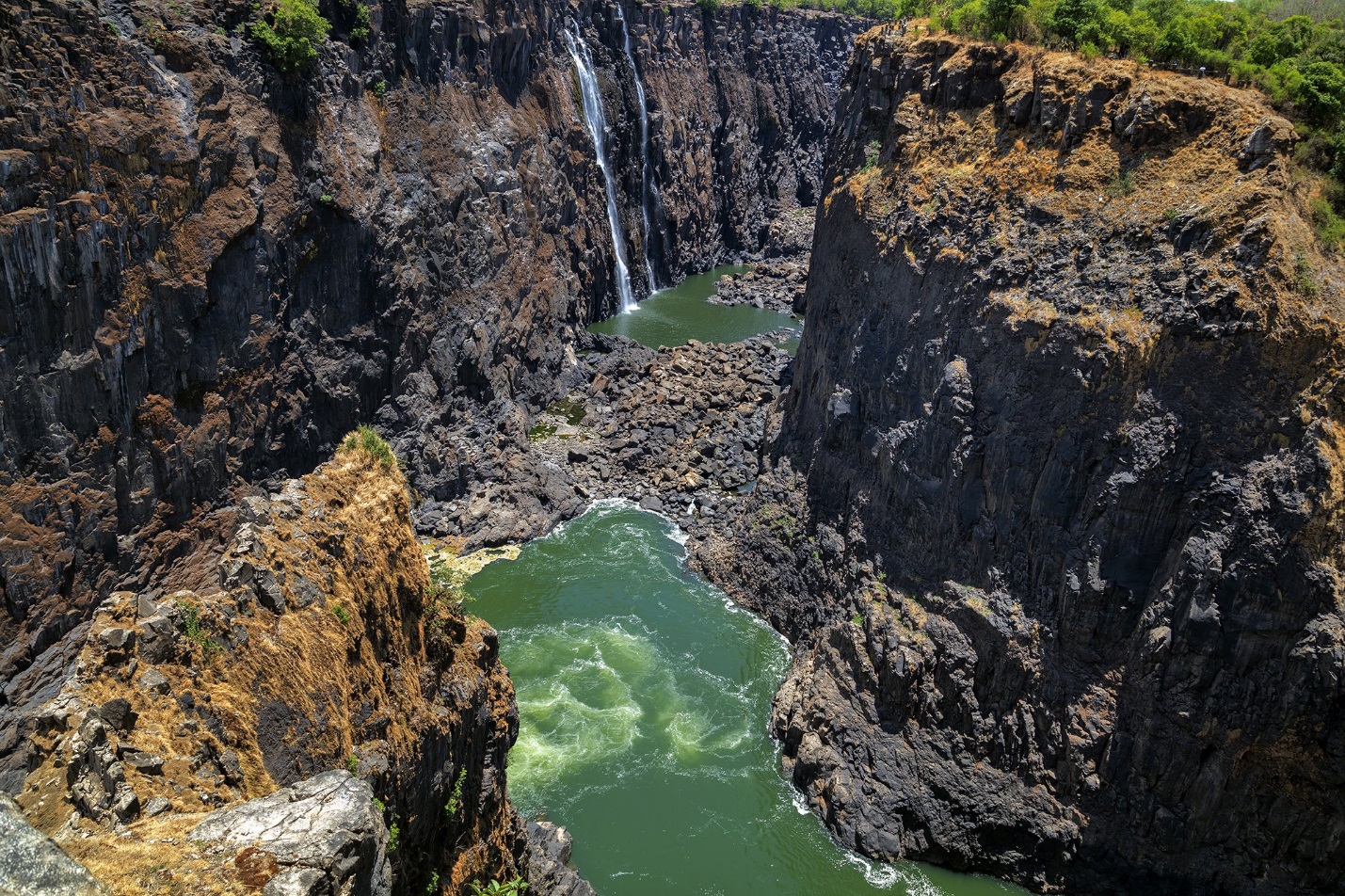
So what led to this incredibly vast migration of the earliest humans, and how did the wetland transform itself into the arid salt expanses that it is now? Well, we have the answer to that question. As the tilt of the Earth’s orbit shifted itself, it set off a snowball effect, where heavy rainfall was experienced on African land. This heavy rainfall also led to an increase in precipitation, which naturally allowed the soil to grow plants, and so, lush, lengthy, and green pathways sprung. So, the earliest humans had a reason to branch away from their homes and move on to neighbouring areas. This is what we now know as the precursor to the massive global migration between 60 and 80 thousand years ago.
63. The True Finding

So, in essence, this is when Vanessa Hayes and her team found the true finding of the study that they conducted. They began to reiterate that they had now discovered what can be termed as the roots of humanity or even our existence’s long-held origin. In all cases, Vanessa Hayes, along with her team, pinpointed Botswana’s exact location that is theorized to previously be the wetland of our origin. Hayes then claimed that they had known for a significant time that Africa is where the origin of modern humans began. They had also known that the time frame of the origin itself dated back around 200 thousand years. However, now, they could pinpoint the exact location.
64. Critics

Like all studies, the study that Vanessa Hayes and her team conducted met with critics and claims of inaccuracy. So, not all of the experts in the field were convinced by the results. However, an expert at London’s Natural History Museum of human origins, Chris Stringer, these modern DNA samples might not be the best representatives of humanity’s origin. He explained that he, in particular, is cautious when it comes to inferring the exact location where our ancestral populations through the use of modern genetic distributions, that too, in a continent like Africa, which is both vast as well as complex.
65. Chris Stringer
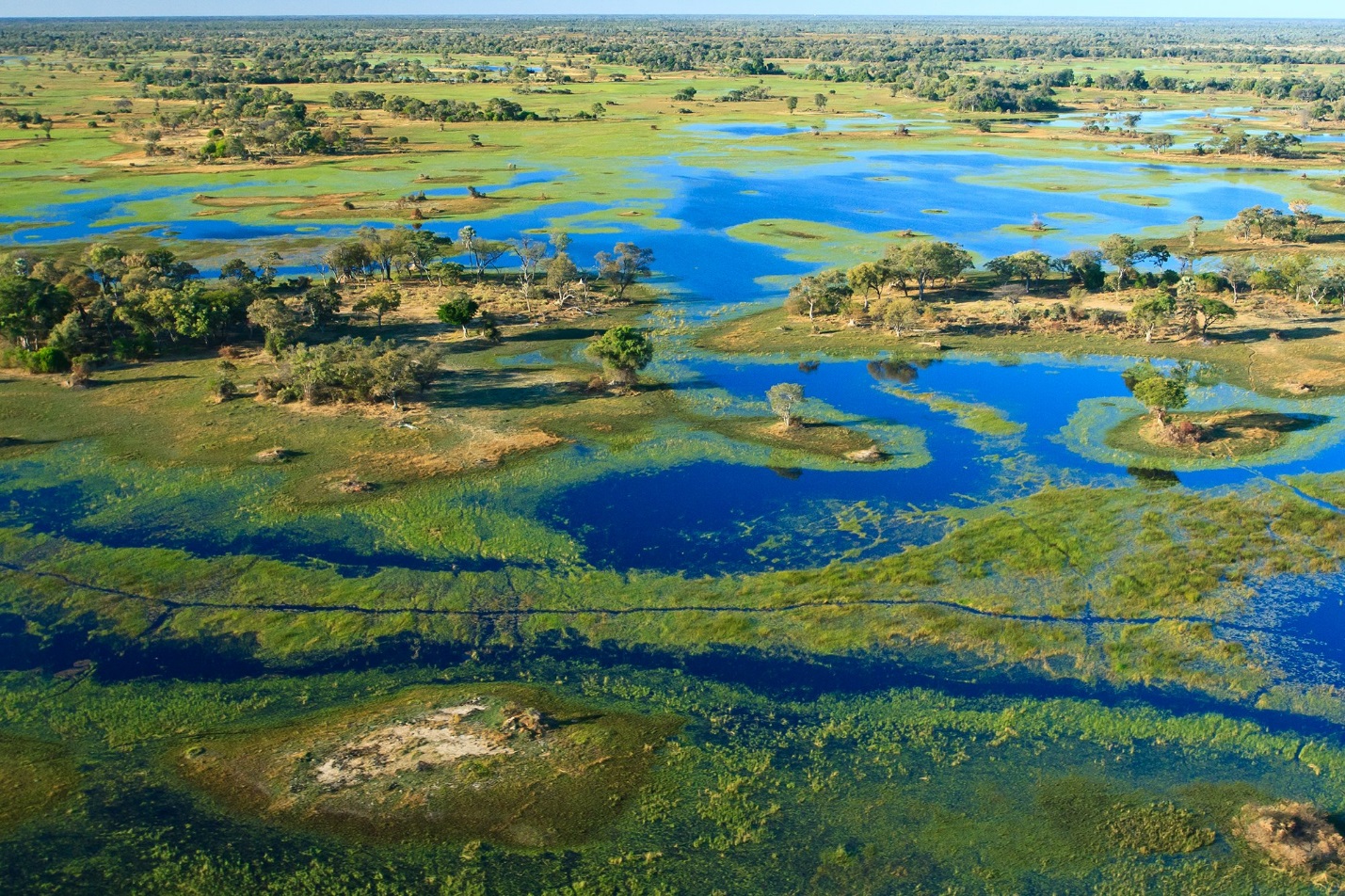
That is not all that Chris Stringer said in the context of the study that Vanessa Hayes and her team conducted. He also said that he felt that, within this study, Vanessa Hayes and her team are relying upon their samples of mitochondrial DNA as well as the trace of the L0 lineage too intently to reach their conclusion. He felt that both items should be regarded as the main factors of their study. He also said that the full complexity that exists within a human’s mosaic origin could not be captured by solely focusing on something as small as a region or even a fossil.
66. Other Studies

Of course, Vanessa Hayes, along with her team, aren’t the only ones who are interesting in finding results that create the possibility that the origin of humanity traces back to the continent of Africa. There have been occasions where Chris Stringer, himself, has shined a light on studies, which focused on studying the Y chromosome that only exists within men in order to pinpoint where it all started. The particular study that he highlighted suggested through its findings that humans had migrated from West Africa. This particularly clashes with what Hayes and her team found as Botswana is quite far away from West Africa.
67. Different Regions

Apart from the study that analysed the Y chromosome that only exists within men, there exists another study that had some interesting findings. According to the results of this study, the human population that took part in Africa’s migration was found to carry genomes. These genomes were then traced back and linked with eastern areas within the continent. So, Chris Stringer concluded that the origin of humanity is much more complicated. In association with all of the different findings, our ancestry is an amalgam connected to a variety of regions within Africa. Of course, this also includes interbreeding between human groups in Africa as other continents.
68. Over-Reaching
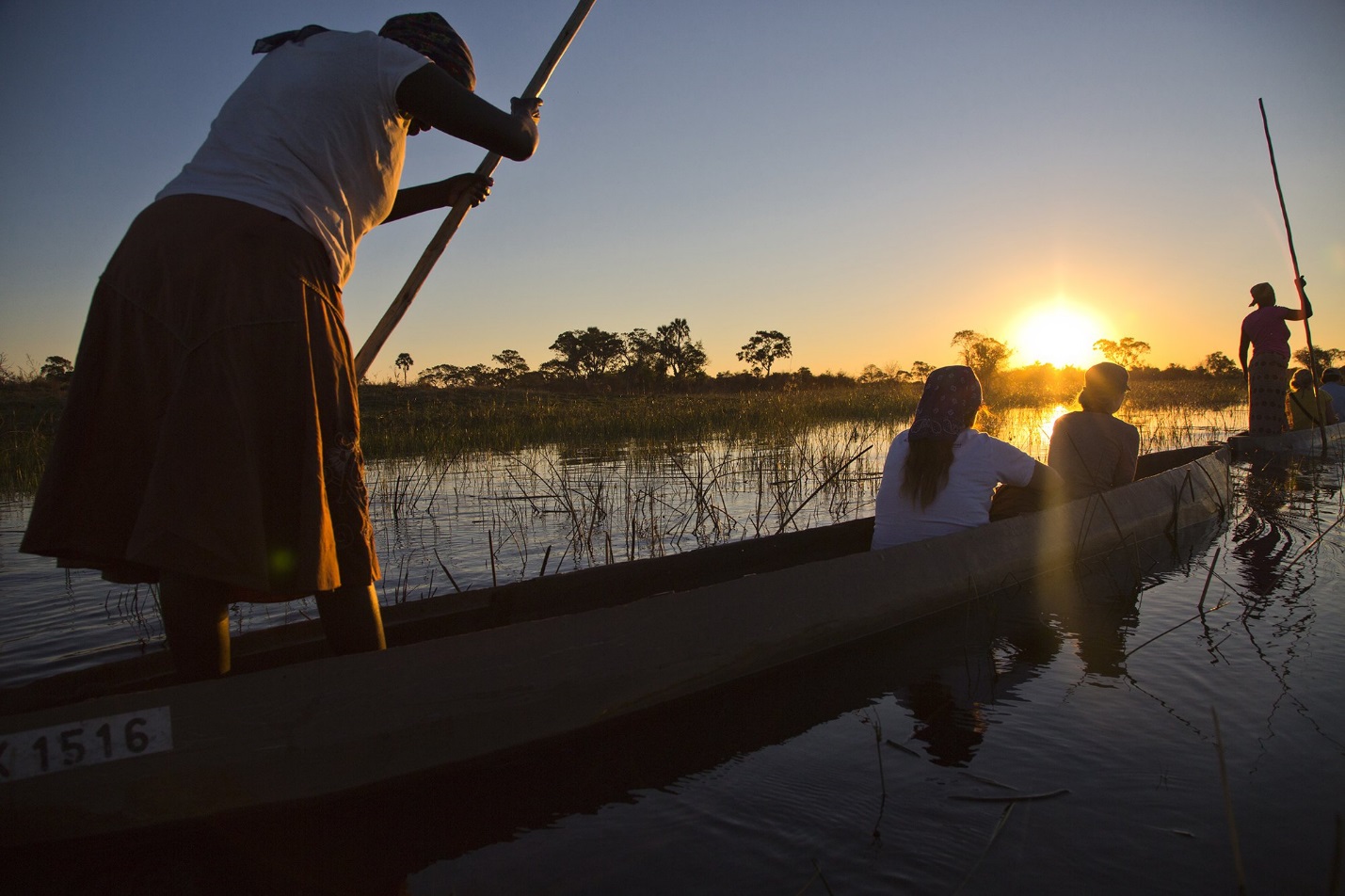
However, that is not where Chris Stringer ended his conclusion and analyses of all of the studies that were conducted in order to pinpoint the exact location. He ultimately said that the findings that came out of the study that Vanessa Hayes and her team conducted were over-reaching. In an interview with BBC News, Stringer claimed that the samples, that is, modern mitochondrial distributions, cannot be used individually as a way to pinpoint a specific location. He reiterated again that they are over-reaching as they are only looking into what can only be considered as a tiny genome to find out a whole story.
69. More Than One Place
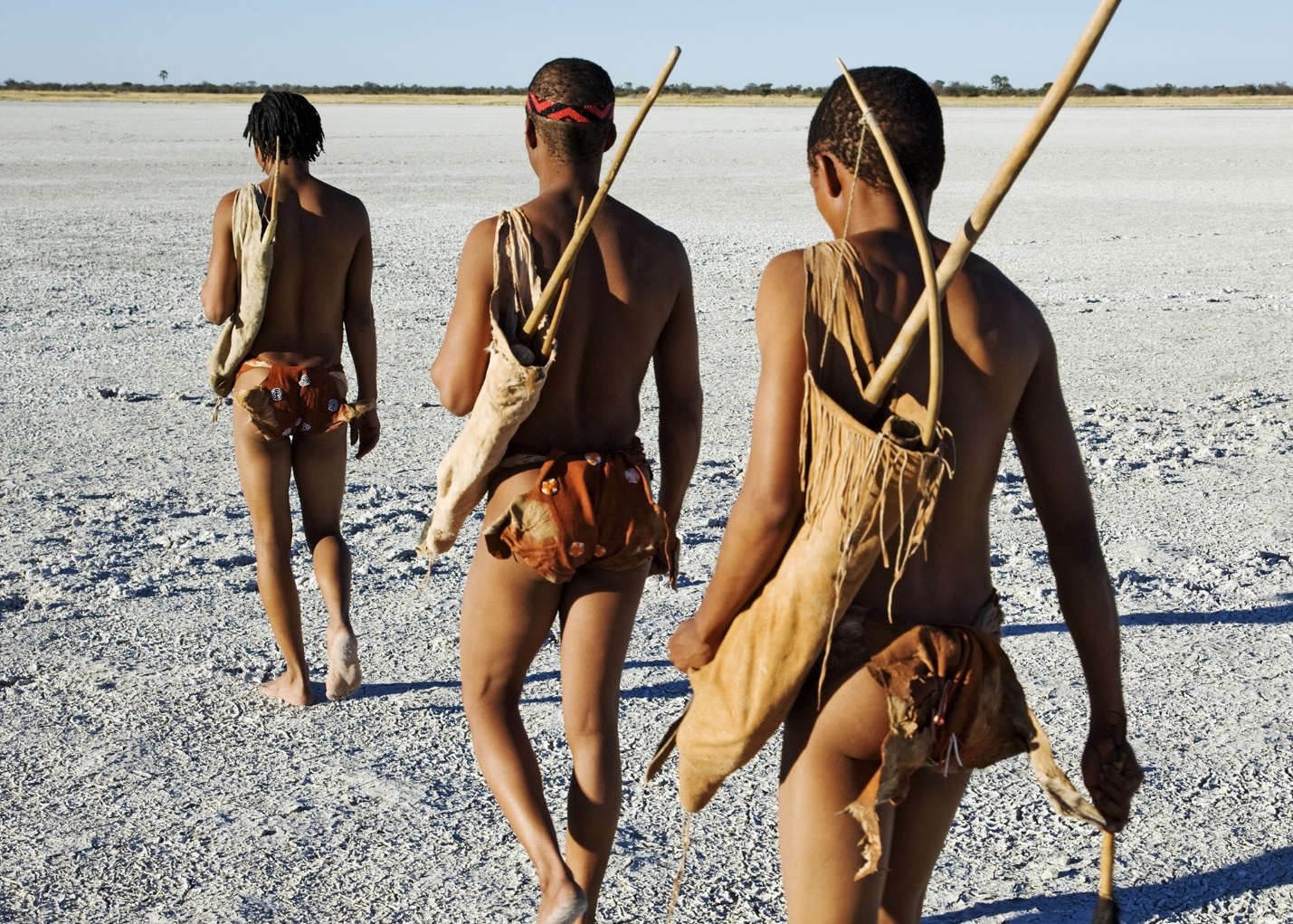
Of course, Vanessa Hayes and other scientists aren’t the only ones who have theorized the location of humanity. There are several other scientists within the field who continue to believe that humanity did not begin from one location; instead, it began from several different locations. An archaeologist named Rebecca Ackermann, who is associated with the University of Cape Town, in an interview with The Guardian, explained that the roots of humanity exist within Africa and beyond. She also said that it is incredibly outdated as well as problematic when scientists draw their conclusions through studies that are based on the analysis of a tiny aspect of the modern genome.
70. A Potential Origin

Despite what expert scientists claim and criticize about the study conducted by Vanessa Hayes and her team, one can still not deny the possibility that their study findings were still able to pinpoint one origin that holds the potential to be the origin of humanity. Several other experts do believe that humanity, as a species, evolved within Africa. However, currently, despite having DNA testing and modern science, we still may not have enough tools to prove it. So, for now, with our intellect, we can believe in the possibility that around 200 thousand years ago, the earliest humans may have found their way to the wetland in Botswana.

